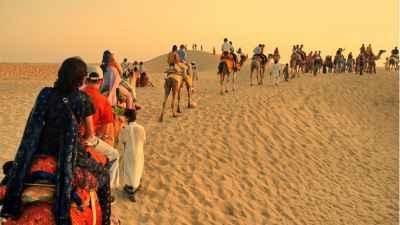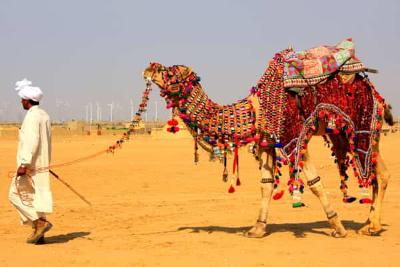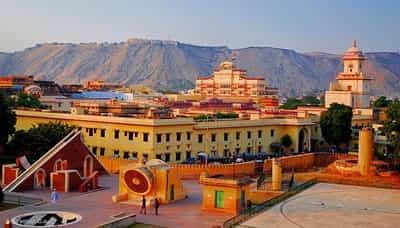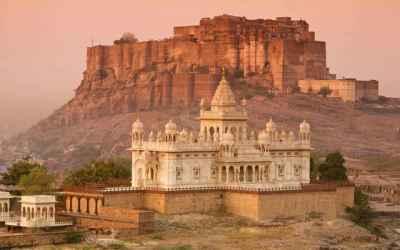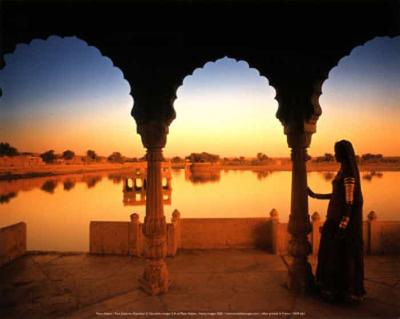Rajasthan’s Puppetry: An Artistic Tradition
Rajasthan’s Puppetry: An Artistic Tradition
Rajasthan, with its rich cultural heritage, is famous for its vibrant folk art forms that have been passed down through generations. One such fascinating and enchanting art form is puppetry. Puppetry holds a special place in Rajasthan's cultural landscape and has been an integral part of the state's cultural heritage for centuries.
The Origins of Puppetry in Rajasthan
Puppetry in Rajasthan has a long and storied history, dating back to ancient times. It is believed to have originated in the 11th century when kings and nobles would entertain themselves with puppet shows. Over time, puppetry evolved into a revered art form that was performed in village squares, fairs, and festivals, captivating audiences with its colorful puppets, vibrant music, and lively performances.
The Traditional Puppets of Rajasthan
Traditional Rajasthani puppets, also known as Kathputlis, are made from wood and cloth. These intricately designed puppets are painted with bright colors, adorned with traditional costumes, and often feature intricate jewelry. The strings that control the puppet's movements are skillfully manipulated by the puppeteer, giving the puppets a lifelike appearance.
The puppets used in Rajasthan's puppetry shows depict various characters from Hindu mythology, folk tales, and historical events. From gods and goddesses to kings and queens, each puppet has a unique personality that comes to life through the puppeteer's skillful manipulation.
The Music and Storytelling
What sets Rajasthan's puppetry apart is the vibrant music and storytelling that accompanies each performance. A traditional puppetry show is a visual and auditory treat, with musicians playing instruments like the dholak, harmonium, nagada, and sarangi, while singers weave a captivating tale to accompany the puppetry. The music and storytelling add depth and emotion to the performances, making them truly mesmerizing.
Popular Puppetry Styles in Rajasthan
1. Kathputli:
Kathputli is the most well-known style of puppetry in Rajasthan. It involves string puppets that are controlled using strings attached to various parts of the puppet's body. Kathputli performances are often accompanied by Rajasthani folk songs and dance, making it a complete visual and musical spectacle.
2. Bhat and Charminar:
Bhat and Charminar are two other popular styles of puppetry in Rajasthan. Bhat puppeteers are known for their storytelling skills and often perform solo. Charminar puppets, on the other hand, are glove puppets and depict characters from mythological stories and folk tales.
The Significance of Puppetry
Puppetry holds great cultural significance in Rajasthan. Apart from being a form of entertainment, puppetry is also used as a means of conveying moral lessons and educating the masses. The stories enacted through puppetry often carry social messages, promote cultural values, and preserve Rajasthan's rich heritage for future generations.
Additionally, puppetry has become a source of livelihood for many families in Rajasthan. Puppeteers travel from village to village, performing shows and earning their livelihood through this ancient art form.
Where to Experience Puppetry in Rajasthan
Travelers visiting Rajasthan can experience the magic of puppetry at various destinations across the state. Some popular places to witness puppetry performances include:
- Jaipur: The capital city offers several cultural centers and heritage hotels that organize puppetry shows for tourists.
- Udaipur: The City of Lakes is known for its rich cultural heritage and is a great place to witness traditional puppetry performances.
- Jaisalmer: This desert city hosts various cultural events where puppetry is a prominent feature.
- Nathdwara: The home of the famous Shrinathji Temple, Nathdwara is known for its vibrant puppetry performances during festivals and celebrations.
In Conclusion
Rajasthan's puppetry is not just an art form; it is a living testament to the state's cultural heritage. The mesmerizing performances, vibrant puppets, and enchanting music transport audiences to a world where stories come alive. Experiencing the magic of puppetry in Rajasthan is an experience that is sure to leave a lasting impression on any traveler.
So next time you plan a trip to Rajasthan, make sure to include a puppetry performance in your itinerary and witness the beauty of this ancient art form firsthand.
Don't forget to share this blog post with your friends and fellow travelers to spread the word about Rajasthan's puppetry tradition!
Disclaimer : The information provided in this blog is for general informational purposes only. While we strive to keep the content accurate and updated, TravelSetu assumes no liability for errors or omissions. If you believe any part of this blog infringes your rights or causes concern, please notify us immediately at info[at]travelsetu[dot]com so that appropriate action can be taken.
